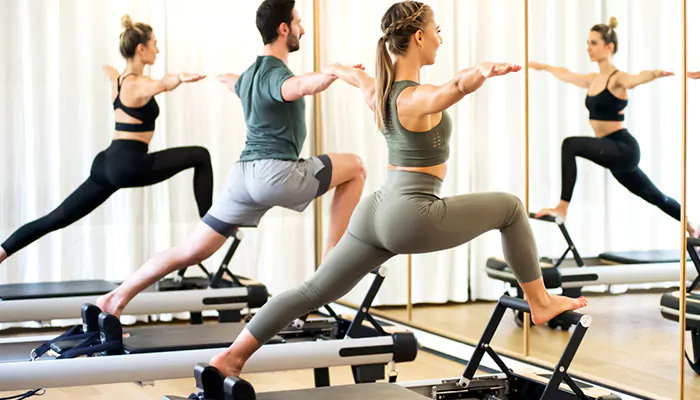
Strong core, flexible body; yep, that’s pilates for you
Pilates is a form of exercise that focuses on strengthening the core muscles, enhancing flexibility, and improving overall body alignment and posture. Developed by Joseph Pilates in the early 20th century, it has gained widespread popularity for its effectiveness in promoting physical strength and mental well-being. The key principles of Pilates include concentration, control, centering, precision, breath, and flow, all of which contribute to its numerous benefits for core strength and flexibility.
Core Strength
One of the primary benefits of Pilates is its ability to strengthen the core muscles. The core muscles include the muscles of the abdomen, lower back, hips, and pelvis, which play a crucial role in stabilizing the spine and supporting the body during movement. Pilates exercises specifically target these muscles, helping to improve their strength and endurance over time.
By performing controlled movements that engage the core muscles, Pilates helps to develop a strong and stable core, which is essential for maintaining proper posture, preventing back pain, and improving overall functional movement. Strong core muscles also contribute to better balance and coordination, reducing the risk of falls and injuries.
Flexibility
In addition to core strength, Pilates is highly effective in promoting flexibility throughout the body. Many Pilates exercises involve stretching and lengthening the muscles, helping to improve flexibility and joint mobility. By focusing on slow, controlled movements and proper alignment, Pilates allows individuals to safely increase their range of motion without risking injury.
Improved flexibility not only enhances physical performance but also reduces muscle tension and stiffness, promoting relaxation and stress relief. Increased flexibility can also help alleviate muscle imbalances and improve overall posture, leading to a more balanced and aligned body.
Here’s what you should do for benefitting from pilates.
Shoulder bridge preparation
Lie on your back, knees bent, feet hip-width apart. Place a pillow between thighs. Exhale, squeeze the pillow, lift hips off the mat, forming a straight line from shoulders to knees. Hold briefly, then lower back down. For added difficulty, hold position, engaging glutes and squeezing pillow on the third rep. Keep shoulders relaxed and avoid overarching the back.
Leg lifts
Lie on back, knees bent, feet hip-width apart. Exhale, lift one leg into tabletop position without moving hips or back. Hold briefly, then lift second leg to tabletop. Hold for 5 counts, then lower both legs. To increase difficulty, keep feet further from hips. Place hands on hips to monitor form and avoid arching the back.
Toe taps
Lie on back, knees bent, feet hip-width apart. Lift one leg into tabletop position. With control, tap one foot to the floor while keeping other leg stable. Inhale leg back to tabletop, then repeat with opposite leg. Modify by tilting pelvis back or reaching foot further from body. Keep abdominals engaged and avoid arching the back.

Single leg stretch
Lie on back with both legs in tabletop position. Exhale, curl head and shoulders off the floor, placing hands on knees. Exhale to extend one leg while keeping back and pelvis stable. Inhale to return leg to tabletop, then repeat with opposite leg. Keep head down and hands in front of knees for added challenge. Focus on breath and engage back of leg under butt during leg extension.
One leg circle
Lie on back with both legs straight. Lift one leg up, keeping hips still. Inhale to reach leg across body, then exhale to make a circle without moving pelvis. Repeat 5 times in each direction, then switch legs. Engage supporting leg and keep neck, shoulders, and ribs relaxed.
Side bend preparation
While on side, press up on forearm and elbow with knees bent. Exhale, push forearm into floor, lifting hips halfway. Inhale to lower hips, then exhale to lift again. Repeat 8–10 times, then switch sides. Straighten legs for added difficulty. Imagine squeezing a tennis ball in underarm to prevent sinking into shoulder.
Sidekick
Lie on side with bottom arm reaching overhead. Lift top leg to hip height. Inhale to kick leg forward, then exhale to kick back. Keep hips stacked and spine long throughout movement. Repeat 8–10 times on each side. Engage abdominals and avoid arching or tucking pelvis.












